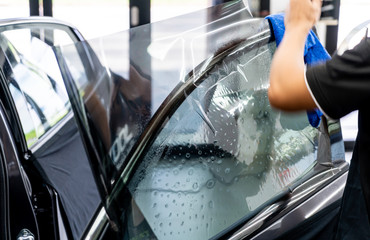Auto window tinting is the process of applying tint to automobiles windows. This process is a growing industry with millions of people having it done each year. The reason for this growth is due to the fact that auto window tinting is a way to protect your investments and protect you from being targeted by thieves. The cost of auto window tinting will vary depending on the type of tint you choose to have put on your car, as well as the area you live in. If you live in a large area, such as New Jersey, you will want to make sure that you know what you can expect when you get your auto window tinting.

In order to estimate the cost of your car tint, you will first need to know what tinting process will give you the best results. There are two main types of tinting that auto car windows can be tinted in, film-based and plastic sheet metal. Although many people prefer the film-based process, the plastic sheet metal is the more economical choice. If you live in a large area, such as New Jersey, you may want to choose the film-based tint so that you can save money on your auto window tinting, while having the best quality result.
The process of auto window tinting will start with the installation of the protective film. This is typically a plastic sheet or some type of thin plastic membrane that is applied to the inside of the auto window. It will cover up the window of the car and will prevent light from coming through. Next, the film will be heated in the tincture lamp, which is a low-wattage bulb. This allows the plastic to melt and then hardens back into a protective layer so that your auto window will remain protected even if the rays of the sun hit it at a high intensity.
After the plastic has hardened, it is rolled onto a mandrel and a piece of the plastic sheet is attached to the end of the mandrel. The sheet is then lifted up and pushed down by two metal tacks that are located on either side of the sheet. These tacks will continue to push the tint down until they reach the bottom of the residential window. The two tacks are removed, and the film is then removed by a firm grip on the edge of the sheet. Then the film is peeled off of the residential window, and a fresh roll of the plastic sheet is placed on top of the tinted one, and this process is repeated for the other windows.
When auto window tinting is being done in a school zone, it is important that the ratio of the film’s thickness and its reflective index comes out correctly. Auto window tinting is done by allowing the tints to react to UV rays that come through the windows. The greater the difference between the thickness and the refractive index, the better the auto tint will reflect UV rays. The thinner the film, the lesser the percentage of UV ray absorption the film has.
A window tint percentage of fifty percent means that there is a fifty percent chance that the window will absorb UV rays. Higher tinting percentages mean that the car will absorb less UV rays, and vice versa. If you have a window-tinting percentage of fifty percent, then it means that your car will be more sensitive to UV rays than other cars that have lower window tint percentages. Therefore, it is important that you watch the window tint percentage when purchasing a new car.
Finally, auto window tinting is done with a mixture of the two basic tints, the dark tint and the light tint. The light tint is made with a mixture of pure pigment in a liquid base. The dark tint contains a combination of zinc and aluminum. Light tinting films are cheaper and are available in most automotive shops. They are easy to use and are applied with an easy to use applicator pen. Dark tinting films are more expensive, but they provide more protection to your car’s interior from being broken into or damaged during a collision.
Auto window tinting can be a great investment to protect your investment. Auto tinting films are affordable, easy to use, and can give your car the protection you need while driving. Keep in mind that the amount of protection is different for every type of tint, and the level of protection provided by the film will depend on the tint type, your driving habits, and how much of those habits you have. So before buying a window tint, make sure to do your research and talk to the tint store clerk to get a general idea of what will be best for you and your car’s maintenance and safety habits. If you are not sure what would be best for your needs, always ask the clerk for help or speak with your friends who may own tinted cars and ask them for advice.